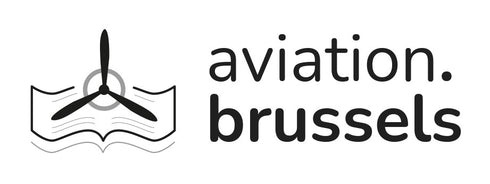Roy Cross ( April 23rd, 1924 ) was born Camberwell ( London, England ).
As a young lad he recalls how he and his younger brother frequently spent the long summer holidays with " Aunty Nell " who lived at Station Road, Smallford ( in between Hatfield and St. Albans, the actual house is no longer standing ).
On rainy days he would sit in her conservatory and read her books on art. He was inspired by the works of Constable, Turner, Frederick - Lord Leighton and Sir Lawrence Alma - Tadema and other great masters. And even later in life the work of great artists helped develop his own abilities ( although he is less impressed with today's " household " names ). In particular, he singles out Montague Dawson for marine subjects, Frank Wootton for aviation and cars, and Terence Cuneo for figures and railways.
In October 1935, he enrolled at Reay Central School, Hackford Road ( South West London ), after failing his 11 - plus exams. The headmaster was Arthur Tasker M.B.E. It was here that Roy Cross had his first formal art lesson. 1938 : with storm clouds gathering across Europe in the lead up to the Second World War, 14 - year - old Roy joined the Air Defence Cadet Corps ( later called the Air Training Corps ). Eventually, becoming a Cadet in No. 343 Camberwell Squadron and promoted to Flight Sergeant for " general efficiency ". He also found he was a capable draughtsman and was engaged by the A.T.C. Gazette ( the Corps publication ). He was also selected to be No. 343 Squadron's lecturer on aircraft recognition.
1940 : recognising that he was not cut out for an academic career, at his father's suggestion, Roy Cross left school before his sixteenth birthday and returned to London. He got his first job – working for a shipping agent at Lower Thames Street, a Danish company called All Transport & Storage. In February 1941, Roy Cross sent Leonard Taylor ( Secretary of the Air League and the Editor of the Air Training Corps Gazette ) sketches and an article on the new U.S. fighter aircraft being adopted by the R.A.F. in his guise as a member of No. 343 Squadron, A.T.C. ( the sketches were eventually published in April the following year ).
In April 1942, he applied to join the drawing office at Flight magazine. Managing Editor Geoffrey Smith while praising his work turned him down when he learnt that Roy was expected to get his call up in the next six months. In the meantime, he had left the shipping job and was working for International Stores, retailers in the City.
Roy's poor eyesight meant he would not be able to enlist as aircrew, and he left the Air Training Corps. However, the sketches he had submitted a year ago were published in the A.T.C. Gazette. These were the first of many sketches and articles to appear in this publication. The same year, his first complete work : U.S. Army Aircraft - a fold out leaflet - was published after his eighteenth birthday. He progressed from there to producing advertising art for the aircraft industry and other companies. He illustrated for The Aeroplane and the Eagle comic.
In 1952 he joined the Society of Aviation Artists, but it is for his work at Airfix which he is best known. He started in 1964 with box art for Airfix's Do 217 and his last work for them was the box art for the German heavy cruiser Prinz Eugen ( 1974 ). He went into marine paintings. Much of the Airfix artwork was destroyed but the lids of many millions of boxes remain.
( sources : amazon, Fine Rare prints, www.hatfield-herts.co.uk, Wikipedia )


